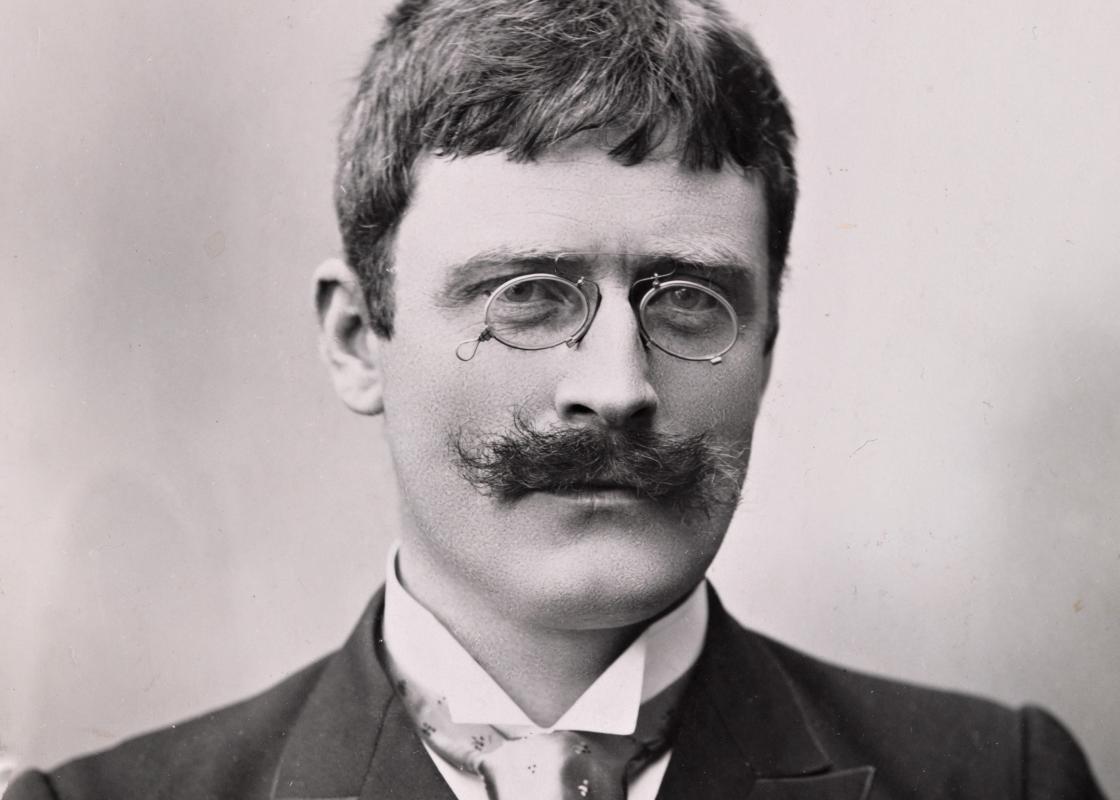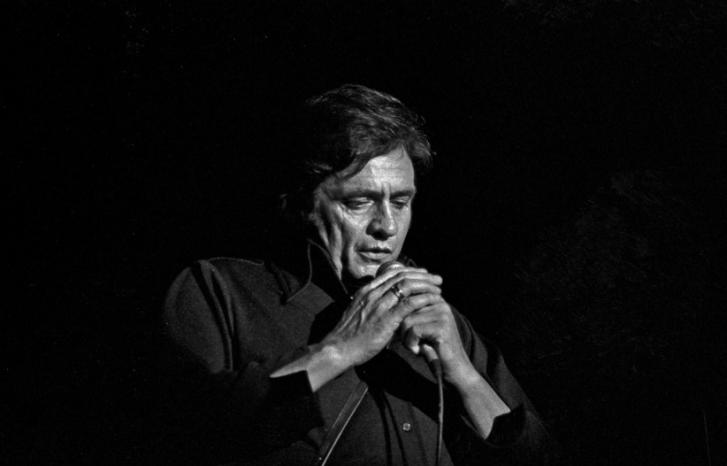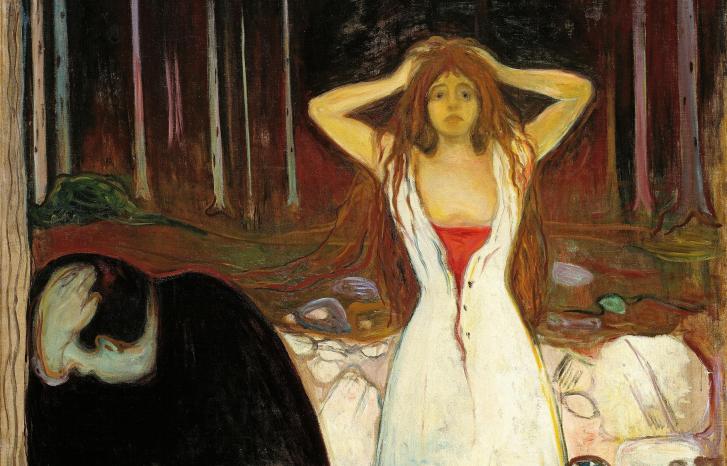Henrik Johnsson and Linda Hamrin Nesby, associate professors at UiT the Arctic University of Norway, are both editors and contributors of a special issue of the journal Nordlit. The special issue is dedicated to Knut Hamsun’s authorship and the result of the Seventh Hamsun Conference, which was arranged in 2019.
Johnsson has written about Hamsun’s short story Hemmelig ve (‘Secret Suffering’) from 1897. By reading the short story in light of queer theory, he interprets it as a story about homoerotic desire.
Pursued by a stranger
In the short story Hemmelig ve, the anonymous narrator is pursued by a man whom he calls ‘the stranger’. We find this pursuer motif in several of Hamsun’s short stories, according to Johnsson.

“The two of them have a very strange relationship. They meet four times, and there is a sort of power struggle going on between them.”
According to Johnsson, there are several examples of men pursuing women in Hamsun’s texts. Researchers have often interpreted this as an erotic motif.
“In Hemmelig ve, however, there is a man who pursues another man, but no-one has interpreted that as erotic. I think this is conspicuous,” he says.
“I find it reasonable to read the power struggle between the narrator and the stranger as sexually charged: Two men battle with a homoerotic desire that they cannot act out, and they fight and struggle because they need to repress their true feelings.”
Horror as pretext
At the same time, the short story is also a type of horror story, Johnsson maintains.
“The relationship between the narrator and the stranger may also be read as a doppelganger motif, in which case the stranger may be interpreted as a part of the narrator’s ‘I’ that he does not want to acknowledge,” he says.
“This is connected to gothic literature. For instance, the writer Sigurd Mathiesen wrote gothic horror stories in the same period that were precisely about homoerotic love.”
Gothic literature was a genre that originated in the romantic period. The genre thematised topics such as death, decay, ghosts and curses.
“The gothic genre enabled writes to write about topics that it was unacceptable to talk about, by hiding unlawful or unacceptable topics behind gothic elements of horror,” he explains.
“In this way, the reader is led towards the horrific and away from what may be the story’s actual topic, such as homosexuality. At the same time, those who are open for or look for such topics will easily recognise them.”
The significance of place
Johnsson also emphasises the places in which the two men meet in his reading of the erotic attraction between the two. Both the first and the fourth encounter take place in Copenhagen, the second on board a train in Germany, and the third in a gambling joint in New York.
“I think it is significant that the meeting places are not private, they do not meet in someone’s home, but they are not entirely public either,” he says.
Tuberculosis was often aestheticized in contemporary art.
“They meet in places where nobody pays any attention to an encounter between two men. At the same time, they are partly protected from the gaze of others. I interpret the fact that they do not meet privately as an image of their inability to act out their desires.”
The short story was published twice under two different titles. The first time, it was called Underlige Sjæle (‘Strange Souls’), and was published in the newspaper Verdens Gang in 1891. It was subsequently rewritten by Hamsun and published under its final title in the collection Siesta in 1897.
“I have compared the two versions, and found that the homoerotic desire is more explicit in the first version than in the second,” says Johnsson.
“It might be that Hamsun himself found it controversial and therefore chose to rewrite the story before it was published in a book collection.”
Illness and gender
In her article ‘Tuberkulose som tegn på virkelighet i Hamsuns Victoria (1898)’ (‘Tuberculosis as reality effect in Hamsun’s Victoria (1898)’), Linda Hamrin Nesby reads the character Victoria as a woman who develops and experiences authenticity through her illness. She has studied Hamsun since she did her PhD in 2009 with a dissertation on the novels Pan, Markens grøde (‘The Growth of the Soil’) and Landstrykere (‘Wayfarers’).

In recent years, Nesby has been particularly interested in illness narratives in Scandinavian literature, such as in Hamsun’s novel På gjengrodde stier (‘On overgrown Paths’).
“In this novel, the ageing Hamsun describes how he has been committed to a psychiatric hospital for examination against his will after the Second World War. The background for this incident was that people found it difficult to accept that Hamsun, a celebrity and representative of high culture, could be a Nazi and still be in his right mind.”
The most obvious illness narrative is nevertheless the one we find in Victoria, Nesby explains.
The novel revolves around a rich landowner’s daughter called Victoria who falls in love with the miller’s son Johannes, who is of a lower social class. When Victoria’s father goes bankrupt, she is forced to deny her love and enter a marriage of convenience in order to save the family economy.
Transition to a new women’s ideal
“In Victoria, Hamsun makes use of the illness motif to describe the female protagonist’s development from a passive character who complies with the social norms of her time, to become an active, determined and modern woman,” she explains.
“When Victoria becomes terminally ill from tuberculosis, she writes a letter to Johannes from her death bed telling him how she has always loved him.”
Nesby explains that the novel is written in the third person singular, apart from Victoria’s letter.
“The reader has little access to Victoria’s thoughts and true feelings until her letter at the end of the novel,” she says.
“In the letter, the narrative voice changes to the first person singular, and we get direct insight into Victoria’s feelings and her love for Johannes. One interpretation of this could be that the illness experience gives her power and courage to express her feelings.”
Other researchers have often emphasised Johannes as the protagonist despite the fact that the novel’s title is Victoria, Nesby maintains.
“This is probably because Johannes is given more space in the text and the reader is given better access to his feelings. The turning point happens at the end of the novel with Victoria’s letter. In it, we get full access to Victoria’s direct description of her feelings, written with her own words. She goes from being a passive character to an active producer of text, she takes control.”
“The fact that Victoria stands up for herself by putting words to her feelings is a sort of self-realisation pointing towards a new women’s ideal: a modern woman who defies society’s conventions and fights for herself and her feelings.”
Hamsun becomes reactionary
According to Nesby, Hamsun describes the new, modern woman in several of his novels from the 1890s, such as in Mysterier (‘Mysteries’), Sult (‘Hunger’) and Pan.
“These novels belong to the period called modernism, and during this period Hamsun highlights several strong female characters in his writing,” she says.
“After 1912, there is a shift and Hamsun becomes more conservative and politically reactionary. This is also reflected in his novels.”
The women often refuse to accept their fate, which in Hamsun’s opinion was motherhood.
The term tuberculosis is never mentioned in the text, but everything points to this being the illness by which Victoria is hit, says Nesby.
“The description of the illness follows the symptoms of tuberculosis. Victoria is portrayed as pale and emaciated, she is coughing blood and we are told that one of her lungs is broken,” she explains.
“The illness was rampant at the end of the nineteenth century, which is precisely the time in which the novel was written. The course of the illness was brutal and there was no cure.”
According to Nesby, tuberculosis was also a common motif in contemporary art in this period.
“Tuberculosis was often aestheticized in the art of the period. This made it easier for the readers to endure an illness that many people knew as brutal and merciless,” she maintains.
“The symptoms were connected to the beauty ideals of the time: women were supposed to be pale, skinny and frail. Victoria lives up to this ideal.”
Struggled with women’s liberation
Christine Hamm, professor of Scandinavian literature at University of Bergen, claims that Hamsun’s female characters are characterised by his struggle to accept the social developments of his time.

“Hamsun struggled to relate to modernisation, which involved urbanisation and industrialisation, but not least women’s liberation,” she says.
“Like other writers such as Garborg and Strindberg, he saw the liberation of women as a problem.”
Here Hamm refers to Brit Andersen, who has written about this phenomenon in her book Ubehaget i det modern (‘The discomfort of the modern’).
“Hamsun’s books describe nervous, partly paranoid men who in many ways may be perceived as ‘feminised’,” she says.
“They let themselves be carried away and have no clear goals. They view women as objects of desire without entering into any direct, real dialogue with them. The best known example is possibly the relationship between the anonymous protagonist in Sult (‘Hunger’) and the mysterious Ylajali, who is sensual and enticing, a temptress according to the male gaze.”
Women as consumers
In contrast to his male characters, Hamsun’s women are to a very little extent described from within, that is, on their own terms, according to Hamm.
“They are important for the development of the plot in the novels, however, since they are strong and determined in contrast to the men,” she says.
“In general, the women are often active and at the same time mysterious to the men, such as Ingeborg Torsen in Den siste glæde (‘The Last Joy’) or Rosa in Benoni. The women often refuse to accept their fate, which in Hamsun’s opinion was motherhood.”
According to Hamm, the characters Barbro in Markens Grøde (‘The Growth of the Soil’) and Olga in Ringen sluttet (‘The Ring is Closed’) are good examples. Barbro becomes a child murderess and Olga avoids motherhood as long as she possibly can.
“Many of the women are also portrayed as large consumers of modern commodities of pleasure, such as Olga in Ringen sluttet. She may be read as a new type of woman in Hamsun’s time, the so-called ‘flapper feminist’,” she says.
“Women are described as being adaptable and even capable of taking advantage of the modern commodity market. At the same time, one may probably argue that Hamsun’s male characters react to this by regarding women as commodities.”
Hamsun on the syllabus
Hamsun’s portrayal of women changed somewhat, according to Hamm. In the beginning, they are sensual, enticing and at the same time mysterious and enigmatic. In the later, more civilisation critical novels, they become stronger, freer and more active.
“And that is precisely why they also become less sympathetic to the reader in the later novels, and a threat to the male characters in their near proximity.”
The students find reading Hamsun in a queer perspective interesting.
“They are always described from men’s perspective. They therefore become caricatured, and they do not call for much empathy,” she says.
“As a university teacher, I find it difficult to encourage my students, who are mostly women, to take an interest in Hamsun. I once taught a course on Hamsun and Undset with a colleague at University of Bergen, and nearly all the students chose to write their term paper on Undset. In a way, I find that symptomatic for the challenge it may be to read Hamsun’s female characters today.”
Hamm is not familiar with any examples of homoerotic desire in Hamsun’s literature.
“However, I do think we can find a good deal of homo-social desire in his books. One example is the Wayfarer trilogy, in which the relationship between Edevart and August has a central place.”
Queer theory evokes interest
“I have primarily done research on August Strindberg before, but Hamsun belongs to the same generation and the milieu in Scandinavia was small. Everyone knew each other well,” says Henrik Johnsson at UiT.
“Homosexual love was a topic explored by several authors in their writing in the 1890s, when Hamsun’s short story was published One example is Sigurd Mathiesen, who was probably a homosexual himself. He wrote about homoerotic desire in the short story Blodtirsdagen (‘Blood Tuesday’).”
There is little to indicate that Hamsun himself was a homosexual, but there are nevertheless several reasons for reading Hemmelig ve as a thematisation of homoerotic desire, according to Johnsson. He also observes large interest among his students in applying queer theory on classics.
“This is a relevant and contemporary perspective. The students find reading Hamsun in a queer perspective interesting,” he says.
“I believe it is important to use this perspective in our teaching because we are educating the future teachers of lower secondary and secondary school. Queer perspectives may be particularly important topics for pupils in these age groups.”
Translated by Cathinka Dahl Hambro.



